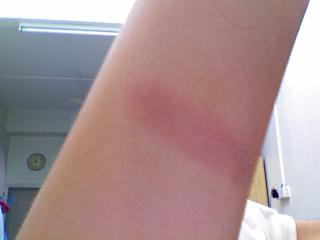
People who are exposed to low temperatures for prolonged periods, such as winter sports enthusiasts, military personnel, and homeless individuals, are at greatest risk. Complications may include hypothermia or compartment syndrome. Swelling or blistering may occur following treatment. This may be followed by clumsiness with a white or bluish color to the skin. The initial symptoms are typically a feeling of cold and tingling or numbing. Most often, frostbite occurs in the hands and feet.
4th degree burn symptoms skin#
Ibuprofen, tetanus vaccine, iloprost, thrombolytics įrostbite is a skin injury that occurs when exposed to extreme low temperatures, causing the freezing of the skin or other tissues, commonly affecting the fingers, toes, nose, ears, cheeks and chin areas. Hypothermia, compartment syndrome Īlcohol, smoking, mental health problems, certain medications, prior cold injury Īvoid cold, wear proper clothing, maintain hydration and nutrition, stay active without becoming exhausted Numbness, feeling cold, clumsiness, pale color Web.Frostbitten toes two to three days after mountain climbingĭermatology, emergency medicine, orthopedics Centers for Disease Control and Prevention. “Fire Deaths and Injuries: Fact Sheet.” Centers for Disease Control and Prevention. Physicians will often use skin grafts or other surgical procedures to recreate the protective layer of skin that was burned. The patient may receive intravenous fluids to prevent dehydration and antibiotics to prevent infection. Once the patient has been transported to a medical facility, physicians can begin treating the burns and resolving complications from the burns. Cooling large areas of burned skin too quickly can cause hypothermia, as natural defenses are not present to allow the body to return the body to normal temperature. First aid solutions that may be helpful in cases of lesser burns, such as running water, may present complications in the case of third and fourth degree burns. Third and fourth degree burns must be treated by medical professionals. In severe cases, excessive burns can cause death. The burning away of this layer may cause compartment syndrome, resulting in further nerve and muscle damage. The hypodermis is the deepest layer of skin that is closest to the muscles. In the case of fourth degree burns, the hypodermis may be burned away. In some cases, infection may enter the blood stream and cause sepsis, which can be life threatening.

This can cause dehydration and lack of oxygen, or complications from low blood volume.ĭamage to tissue, blood vessels, and bones can result in permanent damage to limbs. If major blood vessels are destroyed by burns, lack of blood circulation may result. Third and fourth degree burns have a high risk of infection and may cause the patient to go into shock. Both types of burns will result in partial or total burning away of the skin in the area, and the surrounding skin will often appear blackened and charred. Fourth degree burns may expose muscle tissue or even bone. Third degree burns will expose the adipose, or fat, tissue beneath the dermis layer of skin. Third and fourth degree burns are identifiable by the deterioration of skin and exposure of underlying tissues.

Failure to treat burns quickly can also allow some burns of lesser severity to worsen. In some cases, exposure to an intense burst of electricity or ultraviolet rays will cause third or fourth degree burns. Third and fourth degree burns are typically caused by prolonged exposure to the source of the burn, such as fire, chemicals, or hot liquid. Due to nerve damage, patients may not feel any pain when suffering from third or fourth degree burns. Third degree burns affect tissues and nerves, and fourth degree burns may even extend into bone.

Third and fourth degree burns are extremely severe burns that should be treated as soon as possible by medical professionals.


 0 kommentar(er)
0 kommentar(er)
